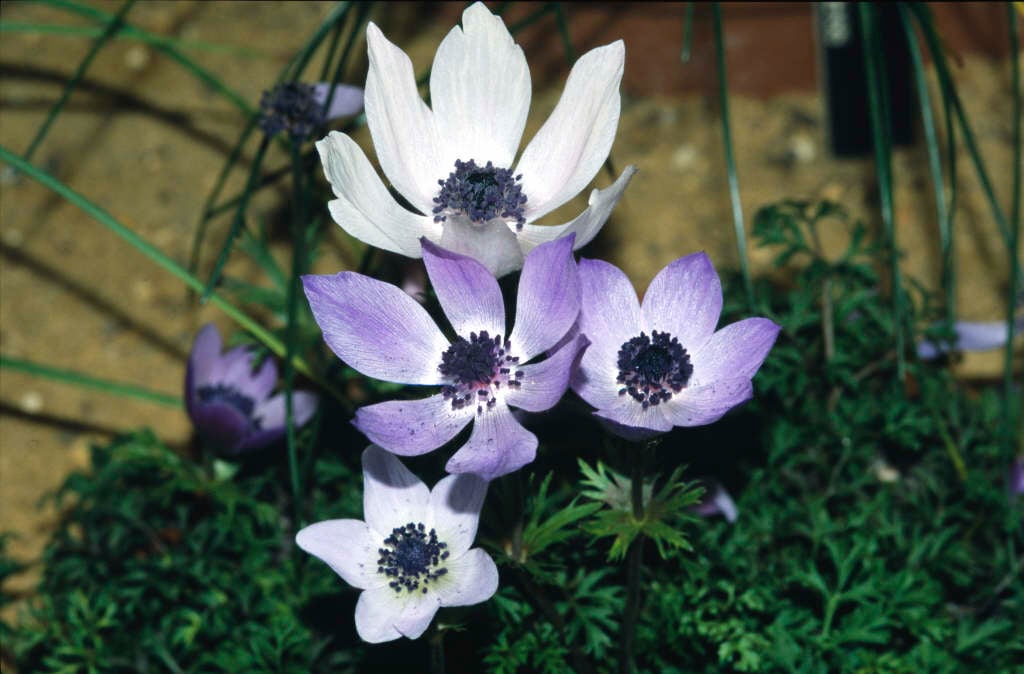Anemone coronaria
garden anemone
Clump-forming perennial about 45cm tall, with parsely-like, finely divided mid-green leaves and stiff stems carrying in spring and early summer solitary, shallowly cup-shaped flowers to 7cm across, which may be red, violet-blue or white; there are also double-flowered cultivars
Size
Ultimate height
0.1–0.5 metresTime to ultimate height
2–5 yearsUltimate spread
0.1–0.5 metresGrowing conditions
Moisture
Well–drainedpH
Acid, Alkaline, NeutralColour & scent
| Stem | Flower | Foliage | Fruit | |
| Spring | Blue Red White | Green | ||
|---|---|---|---|---|
| Summer | Green | |||
| Autumn | ||||
| Winter |
Position
- Full sun
Aspect
South–facing or East–facing or West–facing
Exposure
Sheltered Hardiness
H5Botanical details
- Family
- Ranunculaceae
- Native to GB / Ireland
- No
- Foliage
- Deciduous
- Habit
- Clump forming
- Potentially harmful
- Ingestion may cause mild stomach upset, contact may irritate skin. Wear gloves and other protective equipment when handling
- Genus
Anemone are herbaceous perennials with fibrous, rhizomatous or tuberous rootstocks, palmately lobed leaves and saucer-shaped, usually 5-petalled flowers
- Name status
Correct
- Plant range
- Mediteranean to Caucasus
How to grow
Cultivation
Grow in a light, sandy soil, in full sun, making sure it is kept dry while dormant in summer. May need winter mulch protection in cold areas. See anemone cultivation
Propagation
Propagate by seed, sowing them in containers in a cold frame when ripe or propagate by division of tubers in summer when they are dormant
Suggested planting locations and garden types
- Mediterranean climate plants
- Cottage and informal garden
- Patio and container plants
- Rock garden
- City and courtyard gardens
- Flower borders and beds
Pruning
No pruning required
Pests
May be susceptible to leaf eelworms and damage from caterpillars and slugs
Diseases
May be susceptible to Powdery mildews
Get involved
The Royal Horticultural Society is the UK’s leading gardening charity. We aim to enrich everyone’s life through plants, and make the UK a greener and more beautiful place.
